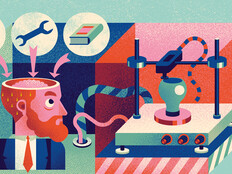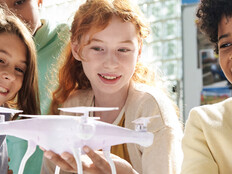STEM Skills Take Flight in a Jumbo Jet Classroom
When it comes to offering students unique experiences and increased access, mobile classrooms are on the rise, from tech-outfitted buses that help troubled students earn their GED diplomas to an RV that brings science, technology, engineering and math (STEM) projects and tools to rural communities.
Students in Kansas City schools will get to experience a completely new kind of mobile classroom. Earlier this summer, it was announced that a two-story jumbo jet will be converted into a new mobile STEM classroom with the goal of teaching students skills that might benefit them in aviation careers.
The local nonprofit TriStar Experience will outfit the jet with all of the technology needed for two floors of hands-on STEM exhibits. In early July, final restoration touches were being made to the jet.
“The idea is to inspire the kids with these big, really cool toys where they can get up close and personal and see the lessons being played out real time to inspire them to actually look into those areas for further study to pursue in high school or college and then ultimately go into aviation-related careers,” TriStar’s Mike Saxton said at the announcement.
The nonprofit’s Aviation Education Platform will initially focus on offerings for fourth and fifth graders as well as sixth through eighth graders. With the help of avionics companies, the nonprofit is adding the PCs and access points necessary to let students experience simulations of work in the aviation industry.
“Our mission is to inspire people, particularly kids, to engage with STEM curricula using aviation as an impressive example of how technology shapes our modern world,” reads TriStar’s website.
Hands-On Work Helps Promote STEM Skills
STEM topics can often be very complex and hard to grasp for elementary students. Christine Cunningham, the director of Engineering is Elementary at the Museum of Science in Boston, developed her curriculum with this in mind.
Offering students hands-on activities that mimic the real-life engineering design process helps prevent students from getting overwhelmed by the topic.
“If we can equip our students with a mindset and a set of habits of mind that allow them to encounter problems they’ve never seen before, I think we equip them for the future in better ways than traditional science can,” Cunningham tells EdTech.
Nathan Lang, an education strategist with CDW, writes that applying STEM skills to real-world situations — like the aviation lab — helps to give students of all backgrounds the opportunity to cultivate an interest in STEM. By creating hands-on experiences that disrupt typical learning, Lang writes, students will be better suited for future STEM careers.
“Instead of attempting to fit STEM activities into existing blocks of learning, we should look at how we can deconstruct traditional content blocks and reconstruct meaningful experiences using innovative STEM practices,” he writes.









